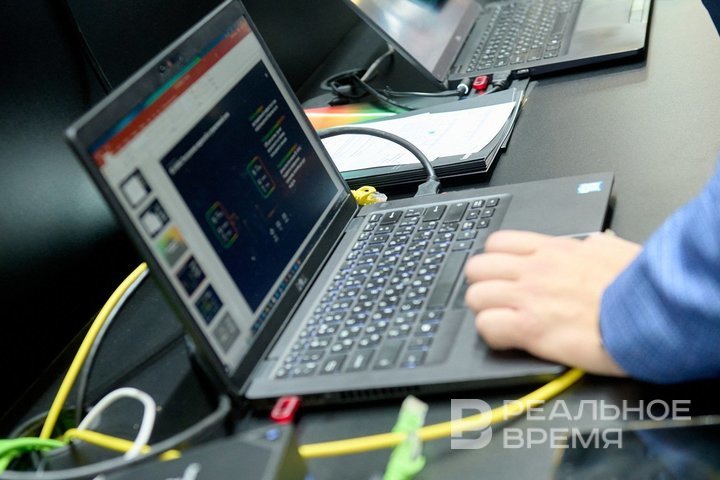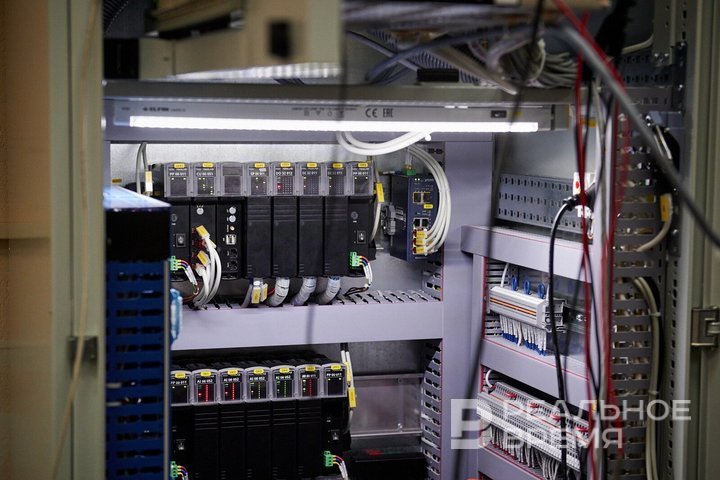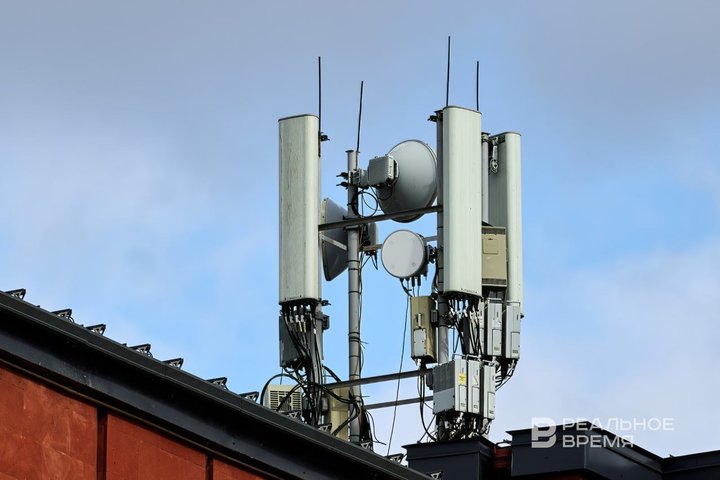What awaits digitalisation in Tatarstan in 2025: trends and outlook

The year 2024 has been declared the Year of Scientific and Technological Development in the Republic of Tatarstan to achieve Russia's technological sovereignty in critical industries and unite the efforts of the authorities, academic and business society. The introduction of modern technologies such as artificial intelligence, Internet of Things (IoT) and blockchain has become an integral part of the region's development. But what awaits digitalisation in Tatarstan in 2025? What new trends and technologies will determine the future of the region, said Levan Shalamberidze, chief operating officer of Yandex Magistrali platform.
How Tatarstan is getting digitalised
Tatarstan is a leading region of Russia in the implementation of digital technologies in all aspects of life. Back in 2021, the Cabinet of Ministers of the republic approved the large-scale program Digital Tatarstan, the implementation of which began in 2022. The main goal of the program is the active use of digital solutions in state and municipal management, improving the quality of life of citizens and working conditions of organisations, as well as the development of innovative infrastructure and the economic potential of the region.
Thus, during the year, the level of digitalisation in Tatarstan increased from 61% to 87%, which allowed the region to rise from fifth place to first in 2022. In 2024, the republic also retains its leading position, and the level of digital maturity, according to Deputy Prime Minister Dmitry Chernyshenko, has reached 95%.
Tatarstan's leading positions in the field of digitalisation are confirmed by holding events such as the annual international forum Kazan Digital Week. In 2024, more than 600 speakers spoke at the forum, and 18,000 people from 64 countries of the world took part. In addition, the republic became a platform for the first Games of the Future — a tournament at the intersection of sports, science and technology, which gave impetus to the development of a new sport in the digital format. In October, the Kazan Cryptoforum industry forum in the field of blockchain technologies and the crypto industry will be held for the fifth time at the site of the Bashir Rameev Tatarstan IT Park.

According to the data of 2022, Tatarstan is the most digitalised in the areas of utilities (96%) and transport (92%). Naberezhnye Chelny is becoming a centre of attraction for opinion leaders in the field of IT solutions for mainline transportation thanks to the Digitalisation of Transport conference — here managers and owners of transport companies share their experience, get acquainted with IT solutions for digitalisation of transportation. Also, half of the transport companies from the top 10 in terms of fleet size are located in Tatarstan.
As for utilities services: Tatarstan has set a new standard for Russia and has become the first region to fully convert public services to an electronic format. From 8 electronic services available in 2019, the number has increased to 319, and today more than 75% of Tatarstan citizens choose the convenience and speed of receiving services through the platform. This trend demonstrates a high degree of digitalisation of the region. Over the use of the electronic portal, residents of Tatarstan have saved 38 million hours and more than 9 billion rubles, which indicates significant economic efficiency and convenience of the new system.
But the authorities are not stopping there. In August 2024, the Ministry of Digital Development of the Republic of Tatarstan announced The Public Services 2.0, which will simplify the provision of services — they can be obtained with a single button via a video call.
Artificial intelligence is also being actively implemented in government projects. For example, within the framework of the Safe City concept, the Uram project has been implemented, which analyzes video streams from cameras on the streets. Over the six months of the project, almost 2,000 stray dogs were identified. And City-soft monitors the state of Kazan's landscaping.

Tatarstan has also become a leader in the digitalisation of agriculture in Russia, showing impressive results in 2023. The introduction of an agricultural information system in 2022, which includes 9 modules and unites almost 3,000 users, increased the accuracy of reporting to 83% and reduced labour costs by 99,000 hours a year. And the use of AI and space monitoring has made it possible to involve more than 3 billion rubles in the economy through the introduction of previously unused land.
How businesses and enterprises are adapting to the digital age
Tatarstan has confirmed its status as a leader in the field of digital transformation and took second place in the ranking of regions for business digitalisation, according to MTS. The study identified the fastest growing industries, including energy, transport and finance, as well as retail and, for the first time, agriculture, especially in the livestock sector, where solutions based on artificial intelligence, Big Data, IoT and cloud infrastructure are being actively implemented. Demand for IoT has doubled in agriculture and transport, and for cloud solutions — 10 times in financial and insurance companies and twice in retail.
First Deputy Minister of Industry and Trade of the Republic of Tatarstan Rodion Karpov notes that the level of digital maturity of enterprises in the republic is more than 44%. The highest level is in the chemical and gas chemical industry, where it reaches an average of 50%. Among the enterprises that demonstrate the highest degree of digital maturity, KAMAZ stands out with a digitalisation rate of 82%, Tatneft — 71%, as well as TAIF-NK, Kazanorgsintez and Grid Company.
For example, in order to achieve its strategic goals of increasing the efficiency of oil production, Tatneft introduces innovative IT solutions into the company's production chain, their contribution is up to 30%. Among them — digital algorithms for managing oil production facilities, 3D modeling and “smart fields”. Thus, the Bugulminsky Mechanical Plant is implementing a program to create an information system for Digital Enterprise with the introduction of an online monitoring system for welding equipment.
And the digital transformation in the Grid Company has revolutionised the management of electric grids. Ten years ago, dispatchers controlled the processes manually, but today smart power grids themselves recover from failures. Data analysis gives the opportunity to predict and prevent accidents long before they occur, and smart meters automatically transmit readings, reducing routine work and increasing efficiency.

Kazanorgsintez received an economic effect of about 120 million rubles in 2022 with the help of digital tools. The introduction of a virtual advisor at the Bisphenol A Plant prevents critical changes in the process. And the use of “mobile check” helps to detect hardware defects at an early stage.
The initiatives of government agencies penetrate not only enterprises, but also the private sector. The main factor in achieving a leading position in agriculture was the creation and implementation of a state information system for the agro-industrial complex, which provides farmers and regulatory authorities with analytical data and up-to-date information on the state of the industry.
Also, the completion of labelling and accounting of farm animals has become an important part of the digitalisation process: today, coverage is 91% of cattle, 11% of small cattle and 63% of pigs. This experience of Tatarstan's transition to digital was presented at the All-Russian meeting “Introduction of digital technologies in veterinary medicine”.
Trends in development of digital technologies in Tatarstan: a look into 2025
As part of the program Digital Transformation of Kazan Municipal Government for 2023-2025, the Tatarstan authorities plan to invest 26.2 million rubles in digital in 2025. By Digital Transformation Program of the Republic of Tatarstan, which was extended for 2025, — 3.8 billion rubles. It is expected that as a result, all workplaces in the executive committee will be provided with Internet access at a speed of at least 10 Mbit/s, as well as 90% of municipal services will be provided in digital format.
Taking into account the steady growth and significant investments in the IT sector, looking at 2025 opens up many interesting trends, including the active development of artificial intelligence. Tatarstan Minister of Digital Development Airat Khairullin announced support for AI startups at an open meeting with IT entrepreneurs. He is confident that by 2026 AI will become a tool for every civil servant, which will automate 60% of tasks and improve the quality of work by 40%. To support startups, an incubator for LLM startups dealing with language models will be created in the IT Park, and developers of AI projects will be given preferential access to computing power.
Tatarstan will also continue to actively develop Internet coverage, which will continue the trends of recent years. For example, the M12 highway from Moscow to Kazan, about 810 km long, was officially opened at the end of December last year. This year, the highway was fully provided with communications and mobile Internet. A project to develop 5G in cities with millions of people is starting in Russia, and Kazan may enter this list. The ministry of digital developemnt of the Republic of Tatarstan plans that by 2027 there will not be a single square centimeter of land on the territory of the republic without Internet access.

Tatarstan opens new horizons in the field of construction. In 2025, the first Russian socio-cultural centre built using 3D printing is going to appear in Almetyevsk district. The project is being implemented jointly with Tatneft. The building with an area of more than 1,500 square metres and a height of 10 metres will be unique for the region and the whole country — it will be the first object that has passed state expertise and put into operation as a 3D-printed one.
In Innopolis, Diginavis is developing Montanum, a full-size prototype of a construction robot capable of erecting four-storey buildings. This automated system is revolutionary in the field of construction, but the answer to the question of who will be responsible for the quality of structures has yet to be found.
Also, by 2025, a 3D digital twin of the city will be created in Kazan, which will improve the accounting and management of urban facilities. Over the past two years, 53.3% of urban infrastructure facilities have been digitised. Municipal and republican organisations are connected to the KMGIS system, and the system itself provides 29 municipal services.
As a result, in 2025, Tatarstan will continue its path to digital transformation, building on the successes already achieved and focusing on global trends. The key areas will be the development of infrastructure and innovative technologies, improving the quality of life through digital services, as well as strengthening the republic's position as a leader in the digital sphere.

Business is interested in digital development and is making efforts to master new technologies, the authorities are determined to support it in these matters, so Tatarstan enterprises have every chance to increase competitiveness in the domestic and international markets.